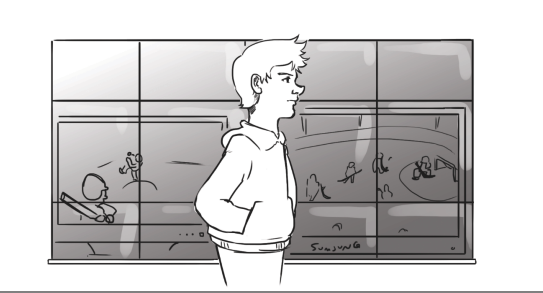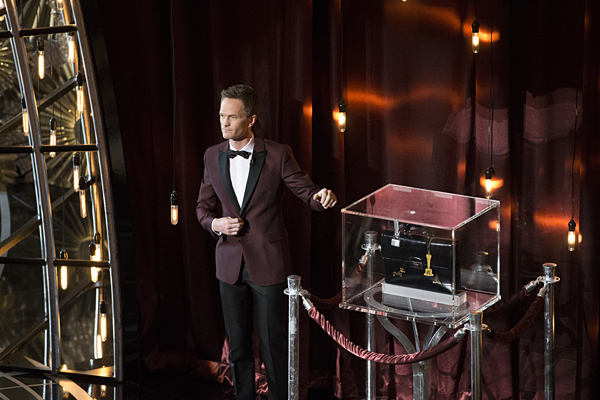When it comes to comparing baseball and hockey, baseball offers more to watch
Michael Scoular | The Cascade (University of Fraser Valley)
Illustration by Anthony Biondi
ABBOTSFORD (CUP)—When William Faulkner wrote of the “almost beautiful” pattern and design of hockey, “that second before… [disintegration] and dissolve,” not only was his a perfect picture of the spectatorship of a sport, but the volatility of being in love with one.
Choosing Faulkner’s go-to hockey quote over any of the thousands of faces that have appeared over the years on The Sports Network (TSN), Canadian Broadcasting Corporation (CBC), or voices on the radio, is probably the obvious undergraduate thing to do. It’s an outsider perspective of something that opens up re-evaluation. It’s a moving away from expected authorities to the period after growing up with a sport—being impressed by family tradition, national identity, and what’s “in” at school. It’s now about choosing interests, values, and reasons of our own. We begin to try to rationalize what we like and face rejecting the rest—either that or ignore the questions of why we watch.
Hockey is said to be free, not bound to the rigidity of plays like football and baseball, more chaotic and physical than basketball. Yet it falls, through this lack of form, into the most basic, uninteresting structures of power play formations, passing lanes, and endless rotation.
For 12 years, I followed hundreds of hockey games closely and memorized names and tendencies that could be almost beautiful in their conforming or breaking—to the point where “broken play leading to a goal” is a pattern in itself. But that also gives the dekes and garbage goals and glove saves of highlight reels a predictability—it’s been seen before. Hockey lives in the replay; it can’t be caught fully the first time, so it then depends on television direction.
Much of hockey’s strategy has the objective of stifling creativity, so perhaps it’s fitting that there’s often nothing that even approaches an attempt to convey the speed and attractive qualities of the game as seen on television. Distant pans cut to behind-the-glass bodychecks, and in situations when it would be better to see the ice in its entirety, the television camera restricts vision, keeping the game conventional, closed in, and stale.
The biggest push away from hockey is in its rough-and-tough culture. The argument surrounding fighting is not something that can be resolved, but does hockey fighting even stand up on merits of being a “good” fight?
It’s marked by overextending, blindly swinging, and awkwardly falling—not as something realistic and messy, but staged and pointless. In the same way, none of the all-too-frequently life-altering injuries could be said to come from a result of a “good” hit. The physicality of hockey is more closely associated with sounds and with selective memory than with the actual menace of the fighting itself. And this is praised and valued.
To compare baseball to hockey is to risk the mentality that one is tougher than the other, and that the athletes aren’t even athletes. On television, the emphasis of home runs and diving catches, although exciting, falls into the same trap of predictability and replay. Where baseball lives is in the so-called boring parts in which nothing is happening.
Baseball broadcasts aren’t groundbreaking, but they don’t have the problem of failing to show. Everything is visible, and the pitcher-catcher-batter relation is clearly defined and observable. When runners reach base, the imperfect but still effective solution of splitting the screen shows multiple perspectives—from base-running coaches in the background to managerial reactions, to the early jump of a stealing runner.
A friend that helped re-introduce me to baseball offered one observation about season and game length: with a game every day, there is less dwelling on the past, allowing for losses because every team has such a packed schedule. What this means is that there is more to watch—there are those that try to see everything, but the overabundance means that there’s always a game to turn on for a few innings as an inoffensive backdrop for an evening of trying-to-but-not doing homework.
Baseball extends through days, timeslots, and pre-conceptions. Surely the greatest experience of watching hockey is playoff overtime when the game doesn’t end until a goal, with no commercials to interrupt. With baseball, there is the possibility for this with every game.
Every half-inning is defined this way; it could be over in a relatively efficient manner, or take an hour with nothing to break in and advertise. Sure, there’s always the signage in sight, and required broadcaster mention, but it’s a pleasant feature, and better yet an outcome of the eternal possibility in baseball—a sport unrestricted by time, where victory is always an open chance.




